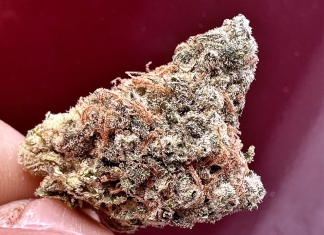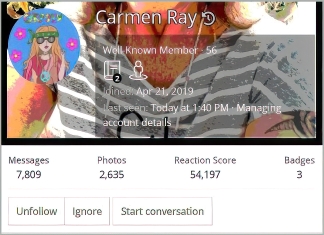After Colorado became the first state in the country to launch legal marijuana sales to anyone over 21, state officials faced an equally unprecedented challenge: How to tell people, in this newly permissive environment, that cannabis use still poses risks?
The first effort tried humor, with ads featuring genial stoners making stupid mistakes. The second effort went for the surreal, with giant rat cages set up across the metro area.
Both were widely ridiculed.
But a new report from the Colorado Health Department suggests that a third approach was just right. People who encountered the department’s “Good to Know” campaign — which features a neighborly tone and probably the only use of hoedown music ever in marijuana public service announcements — were more likely to understand the state’s cannabis laws and to believe that marijuana use has risks for health and safety, according to the report.
Those results have Dr. Larry Wolk, the executive director of the Colorado Department of Public Health and Environment, cautiously ready to declare a victory in public health messaging about drugs, a field mostly known for prominent failures.
“It, maybe, has been money well spent,” Wolk said.
For decades, health officials have struggled to come up with anti-drug messages that will resonate with their intended audiences, especially when those audiences are young.
Remember the DARE campaign, a common feature in classrooms two decades ago? Multiple researchers have concluded that it didn’t work. And it isn’t alone. In study upon study, numerous anti-drug campaigns have been shown to have little to no impact on drug use.
Some campaigns can even backfire, leading kids, especially, to believe that drug use either isn’t a big deal or is something that everybody around them is already doing.
“The problem that the ads had,” Keith Humphreys, a Stanford University professor and former drug policy adviser to two U.S. presidents, told National Public Radio in an interview last year, “was they’re trying to please the congressional audience, a 60-year-old white man or woman in a suit. That’s not what’s going to resonate with kids.”
When Colorado voters legalized marijuana use and possession in 2012, that problem was only compounded. So state officials tried a shift in tone that they viewed as stepping away from “Just say no.”
The first ads, which cautioned against driving while high, featured stoners forgetting to screw a TV into a wall before sitting down to watch or forgetting to hook up the grill before setting out to cook. That’s OK, the ads said, as long as you don’t drive high. (Marijuana advocates criticized the ads as condescending.)
A second campaign — targeted at teens — was called “Don’t Be a Lab Rat,” and it was built around a high-concept metaphor: that teens who smoke pot are unwittingly submitting themselves to an experiment on their brains since they do not know what the long-term impacts of marijuana use will be. (The campaign also featured installations around the city of human-sized rat cages, which were promptly mocked and vandalized.)
Mason Tvert, who helped lead the campaign for legalization, watched and shook his head. In his view, campaigns to encourage responsible marijuana use can’t begin with the premise that marijuana use is wrong.
“It has to be nonjudgmental,” he said.
In other words, Colorado had to become the first state in the country to take the “anti” out of its anti-drug ads.
When the “Good to Know” campaign launched in early 2015, one year after the start of legal sales at stores, it was startling in its friendliness. Upbeat, twangy music played in the background. The voiceover was self-consciously folksy and, often, rhyming.
“For those underage, it’s just not OK,” one radio spot went. “Their brains are still growing, so keep it away.”
“This is not an aversion campaign,” Wolk said at the time. “This is really a way to educate folks without alienating folks.”
Subsequent iterations of the campaign have specifically targeted Spanish speakers or tried to inspire “trusted adults” — parents, teachers or other mentors — to talk to kids about pot. The campaign is funded by marijuana tax dollars.
The Health Department’s new study, led by researchers at the Colorado School of Public Health, suggests the campaign has been a success.
People who’d seen the Good to Know campaign were 2.5 times more likely to know about key components of the legalization law — like the prohibition on public use — than those who hadn’t seen the campaign. They also were more likely to say that heavy marijuana use can have negative health consequences and that driving within six hours of using marijuana is dangerous.
Messages targeted specifically at pregnant women, parents and tourists showed similarly encouraging signs of effectiveness, according to the study.
To Tvert, the reason for the campaign’s apparent success is clear.
“There are certain potential harms for certain people and we need to make sure those people are learning about
those potential harms and not scaring everyone with exaggerated harms,” he said. “And I think they’ve gotten much better at that.”
Wolk agreed, in a way, saying that the campaign’s efforts to target specifics groups — such as at-risk kids — is a big reason for its success. But he said his department has a lot more work to do in talking to Coloradans about marijuana’s downsides.
The new study also revealed some weaknesses in the campaign’s messaging.
People who use marijuana were found to be only about half as likely as non-users to believe that marijuana use can lead to dependence or that using marijuana daily can have negative health effects. Parents who use marijuana were less likely to say they thought cannabis has health risks for adolescents.
“Now that we’ve gained some good ground, the focus is really going to intensify now on the potential health effects,” Wolk said.
The department, he said, hopes to more directly address people who are already using marijuana, not just those who might use marijuana. It also plans to step up a campaign called “Protect What’s Next,” which encourages kids to set goals for their lives and then cautions that marijuana use could get in the way of those.
Those kinds of ominous warnings could clash with the friendly tone that the Good to Know campaign has established. Tvert said he believes the state must keep its nonjudgmental approach going forward and also include information about alcohol and other drugs.
But Wolk assured that the department’s friendlier approach won’t change.
“Youth don’t want to hear that it’s going to impact a developing brain from doctors like me,” he said. “They’re going to want to hear from peers or trusted adults about what’s next.”














